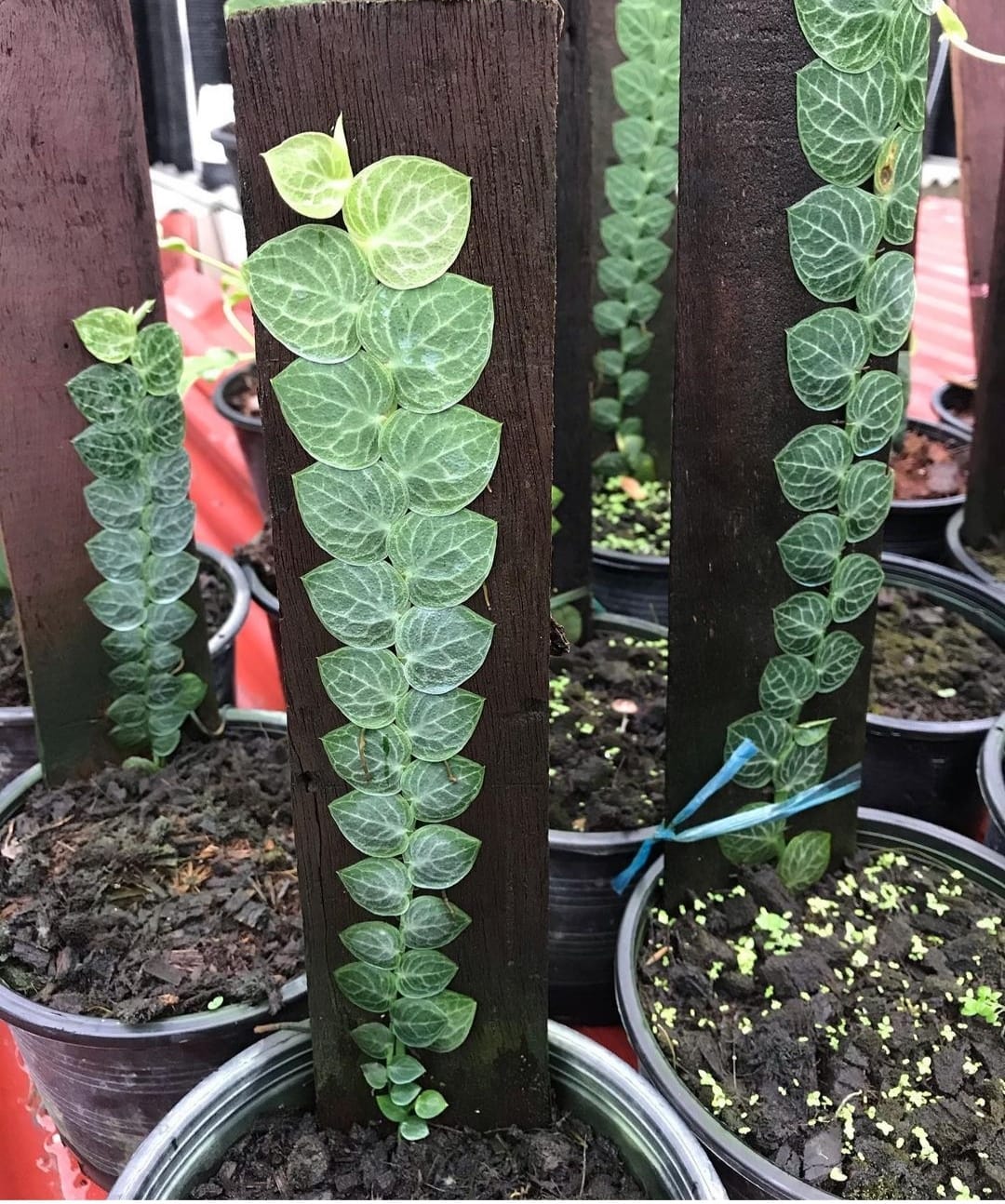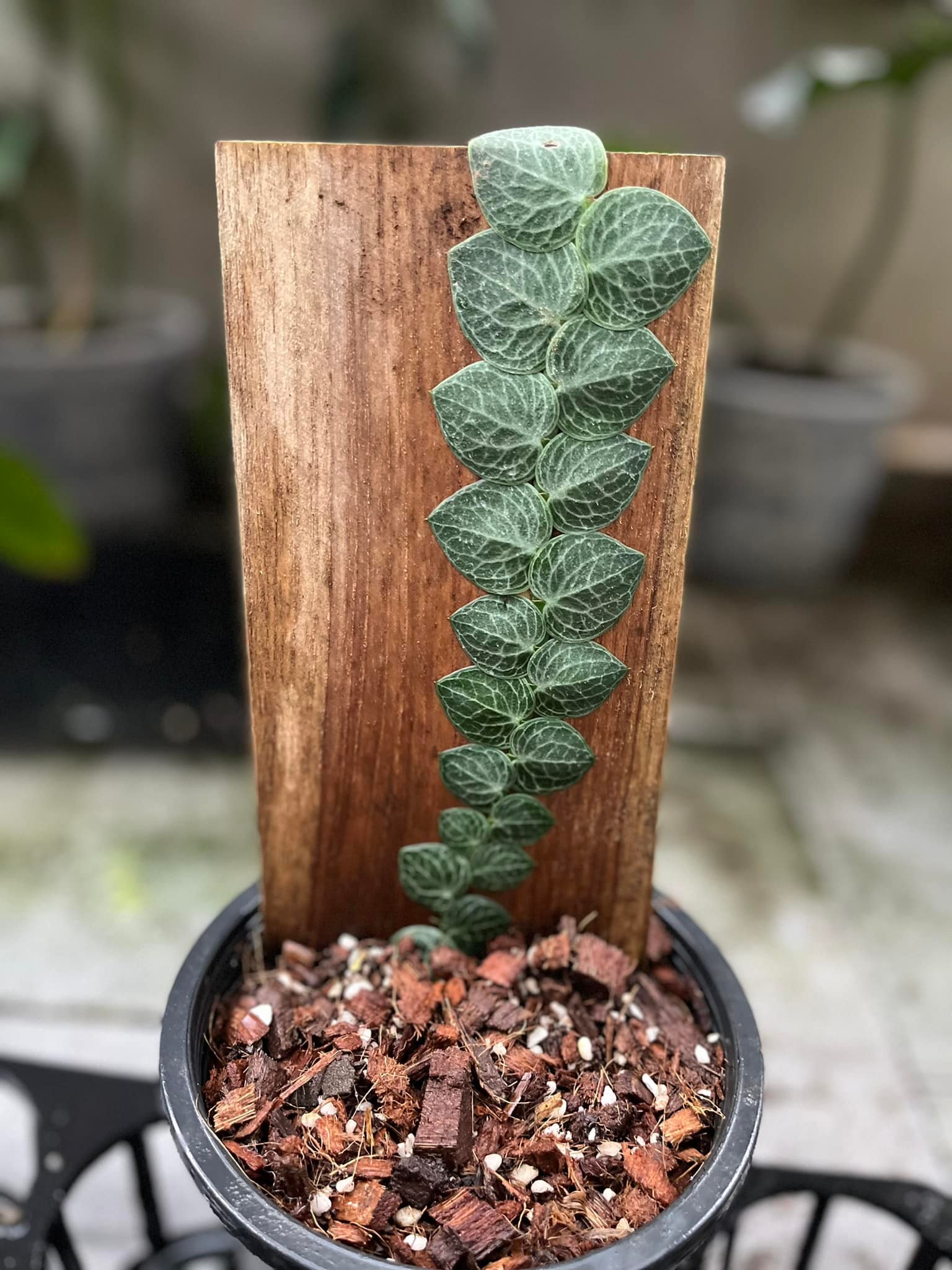The Rhaphidophora Ryptantha, also known as the Rhaphidophora Tetrasperma or “Mini Monstera”, is a popular houseplant known for its gorgeous split leaves that resemble those of the iconic Monstera Deliciosa. Though relatively easy to care for, the Rhaphidophora Ryptantha has some specific needs in order to really thrive indoors over time. Follow these 5 essential secrets and watch your Mini Monstera flourish with huge, healthy leaves and vigorous climbing vines.

Proper Potting Mix
Aeration is Key
The Rhaphidophora Ryptantha needs a potting mix that drains rapidly and still retains some moisture. A dense, soggy mix will cause root rot and leaf spot diseases. The ideal mix contains components like:
- Coarse orchid bark which allows air pockets around the roots
- Perlite or pumice to keep the mix loose
- High quality potting soil to retain some moisture
You can make your own mix by combing 2 parts potting soil, 1 part orchid bark, and 1 part perlite or pumice stone. Or simply purchase an aroid or orchid specific potting mix from your local nursery or garden center.
Re-pot Regularly
Repot your Rhaphidophora Ryptantha each spring even if it hasn’t outgrown its current container. The potting mix breaks down over time and becomes compressed, cutting off air from the plant’s root zone. Gently remove it, loosen any circling roots, trim any that are dark or mushy, and repot it in fresh mix. This keeps your plant healthy year after year.
“For more insights on the ideal soil composition for your Rhaphidophora Ryptantha, consider reading about the 5 best soil types to grow Rhaphidophora at home, which provides detailed information on creating the perfect growing environment.”
Bright, Indirect Sunlight
South or West Facing Windows are Best
While it tolerates low light conditions, the Rhaphidophora Ryptantha thrives in bright, indirect sunlight from a south or west facing window where it gets lots of gentle afternoon sun. Avoid direct hot midday sun which can scorch its leaves. Filter the light with a sheer curtain if needed. If you don’t have a good window, supplement with a broad spectrum grow light.
“Learn more about the importance of lighting for your plant in our detailed guide, Discover the Fascinating World of Rhaphidophora Varieties, which discusses the optimal light conditions for different species.”
Turn Regularly to Prevent Lopsided Growth
Indoor Rhaphidophora Ryptantha plants tend to grow towards whatever light source there is, even if it’s not that bright. This can cause them to become lopsided or uneven. Simply turn the pot a quarter turn each week to ensure all sides get even light exposure. This encourages even, full growth.

Shop now and bring home your very own Rhaphidophora Ryptantha.
Consistent Warmth & Humidity
Ideal Temperature Range
The Rhaphidophora Ryptantha prefers consistent warm temperatures between 65-80°F. Much cooler or hotter than that can negatively impact growth and cause leaf damage. In most homes, average room temperature falls within an acceptable range. You can supplement heating and cooling systems with a portable humidifier-heater unit or small fan if needed to help regulate the temperature.
Increase Humidity Levels
In its native tropical habitat, this plant thrives in steamy, humid air. Replicate those conditions at home by using a room humidifier, setting the pot on a pebble humidity tray, or simply misting the leaves several times a week. 40-60% humidity is best. Higher levels prevent crispy leaf edges and boost growth.
Watering Best Practices
Allow Soil to Dry Out Slightly Between Waterings
Water thoroughly once the top inch or so of soil becomes dry, taking care not to overwater. The Rhaphidophora Ryptantha is prone to root rot if the soil stays too wet for too long. Allowing it dry out some between waterings ensures healthy oxygen flow to the roots. The less humid and bright the conditions, the more often it will need watering. Poke your finger in the soil to gauge moisture levels.
Water Until It Flows From Drainage Holes
Each time you water, add enough so that excess runs out of the container’s drainage holes. This flushes out any built up mineral salts from tap water and ensures the entire root zone gets hydrated. Allow all excess to drain fully before returning the pot to its decorative holder. Never allow it sit in standing water which leads to disease and decline.
“Avoid common watering mistakes by consulting our guide on 5 common reasons why your Rhaphidophora leaves are turning yellow, which includes tips on proper watering techniques.”

Proper Support & Pruning
Use A Moss Pole or Trellis to Climb
In nature, the Rhaphidophora Ryptantha uses its aerial roots to climb up tree trunks and branches towards sunlight. Give yours a comparable vertical structure to cling to like a moss pole or trellis. Use soft plant ties to gently direct new vines towards the support. This prevents breakage and encourages taller, fuller growth over time.
Prune Damaged Leaves & Overgrown Vines
Remove any leaves that are fully yellowed, crispy brown around the edges, or marked with dark soft spots. Prune back any extra long, leggy vines to keep growth compact and full. Sterilize pruners in dilute alcohol beforehand to avoid transmitting diseases. New shoots and offshoots will quickly emerge from properly pruned stems.
Conclusion
Following these essential Rhaphidophora Ryptantha care secrets sets the stage for your Mini Monstera to thrive indoors. Address its preferences for airy potting mix, bright filtered sunlight, consistent warmth and humidity, proper moisture, and structural support. Do so and you’ll be rewarded with a vigorously growing, lush, gorgeous specimen climbing its way towards the light.
FAQ
- What is Rhaphidophora Ryptantha?
- Rhaphidophora Ryptantha is a species of tropical climbing plant known for its attractive foliage. It belongs to the Araceae family and is popular among plant enthusiasts for its unique appearance.
- How do I care for Rhaphidophora Ryptantha?
- Rhaphidophora Ryptantha thrives in bright, indirect light and well-draining soil. Keep the soil consistently moist but not waterlogged. Regularly mist the leaves to maintain humidity, and provide support for the plant to climb as it grows.
- Is Rhaphidophora Ryptantha toxic to pets?
- Yes, Rhaphidophora Ryptantha can be toxic to pets if ingested. It contains calcium oxalate crystals that can cause irritation and discomfort if consumed by cats, dogs, or other animals. Keep it out of their reach.
- How fast does Rhaphidophora Ryptantha grow?
- The growth rate of Rhaphidophora Ryptantha can vary depending on environmental conditions. Typically, it is considered a moderately fast-growing plant, especially when provided with proper care and optimal conditions.
- Can I propagate Rhaphidophora Ryptantha?
- Yes, you can propagate Rhaphidophora Ryptantha through stem cuttings or by air layering. Stem cuttings can be rooted in water or soil, while air layering involves encouraging roots to grow on a branch while it’s still attached to the parent plant. Both methods are effective for propagating this plant.

